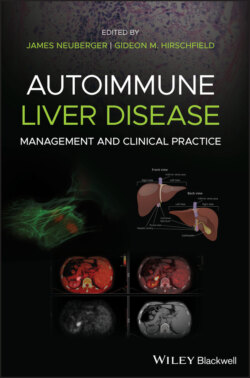Читать книгу Autoimmune Liver Disease - Группа авторов - Страница 56
Natural and Inducible T Regulatory Cells
ОглавлениеTregs are classified as natural Tregs (nTregs) or inducible Tregs (iTregs) [11]. nTregs are produced in the thymus and represent 5–10% of the total CD4 T‐cell population. Despite having a relatively high affinity for autoantigens, nTregs escape clonal deletion in the thymus. In the periphery, nTregs act as autoantigen‐specific sentinels within the lymph nodes and spleen to maintain peripheral tolerance. They do so by inhibiting autoantigen activation of T cells by APCs, causing direct cytotoxicity of autoantigen‐activated T cells and secreting anti‐inflammatory cytokines IL‐10 and TGF‐β.
iTregs are a subset of CD4 T cells activated in the periphery (Figure 2.2). When naive CD4 T cells (CD4 Th0 cells) are activated in the presence of IL‐10, IL‐4 and TGF‐β, they differentiate into antigen‐specific CD4, CD25, FoxP3 iTregs. Both foreign antigens and autoantigens can generate antigen‐specific iTregs, conferring immunoregulatory importance in both normal immunity and autoimmunity. iTregs suppress effector CD4 T‐cell subsets and cytotoxic CD8 T cells by secreting immunosuppressive IL‐10 and TGF‐β, inducing cell cycle arrest and effector T‐cell apoptosis. In addition, iTregs block the costimulation and maturation of DCs. Among iTregs (Figure 2.2), the T regulatory 1 (Tr1) subclass exclusively secretes IL‐10 but does not express FoxP3. In contrast, the T helper 3 (Th3) subclass exclusively secretes TGF‐β.
